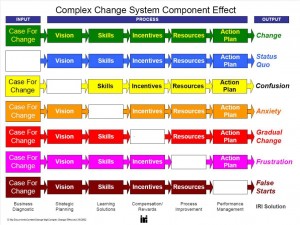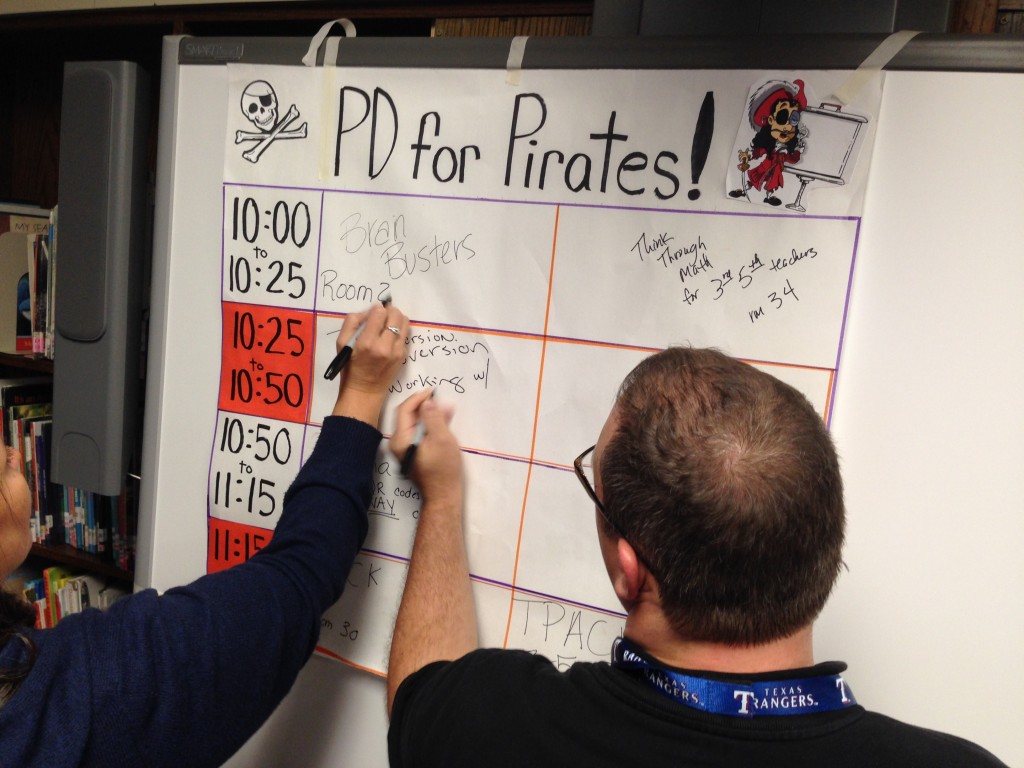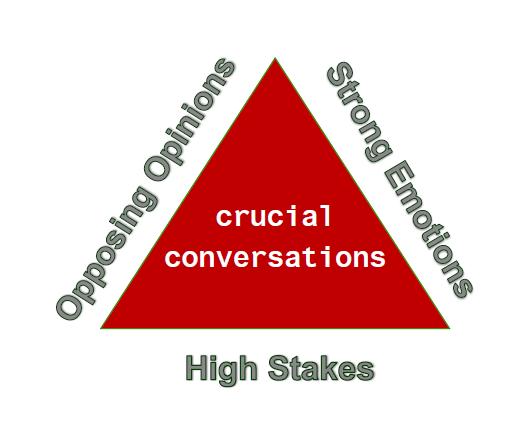Author Archive
In this hangout instructional leaders Jason Markey, Melissa Emler, Tony Sinanis, & Zach Snow discuss the importance of student voice and how to harness the power that passionate students are willing to share…if we listen.

We’ve been discussing the “change matrix” within a leadership group in my district.

What’s in it for me? When it comes to change, this may be one of the most frequently used phrases, both vocalized and internalized. Too many times we miss out on great opportunities because we have the wrong mindset. At what point in a teacher’s career does the focus shift from doing what is best for students to, “let’s do what’s best for me.” Our systems are built around the convenience of the adults and not necessarily for the benefit of the students.
I know that some of you may disagree, but where’s your evidence?
1). Master schedule is based on adult’s preference.
2). Teachers threaten to quit or transfer if they do not get the classroom or conference that they want.
3.) Knowing that some teachers lessons aren’t up to par, but not wanting to rock the status quo.
4.) Looking the other way at worksheet driven classrooms because “the test scores are fine.”
Educators need to be redirected back to the purpose of our profession – doing what’s best for students’ success. Our current practices may give us gradual change, but not the change you need to truly make a difference.
We must provide incentives, which doesn’t always mean money. Knowing how important the students are to both their own success and to ours, what can we do, incentive-wise, to get teachers to focus on what’s best for students? How do you steer the conversations back to what’s best for students? Are you a students’ principal?
(Thanks to Dr. Gerald Hudson for the starting point here, :))
Amber

 When planning for your staff development or professional development or growth opportunity…do you differentiate for your teachers?
When planning for your staff development or professional development or growth opportunity…do you differentiate for your teachers?
I know, I know…with everything else on your plate, now you’re supposed to add that to your list of to do’s? The answer is yes, if you want them to be completely dialed in and connected. In the same way that we expect our teachers to meet the needs of the learners in their class, we as administrators need to recognize the different levels of abilities and experiences on our staff. A differentiated approach to PD is needed to meet the diversity of teacher needs. PD should always be an evolving process of reflection and growth, and the way to accomplish that, is to get creative with how it’s planned and delivered.
Meeting teachers where they are isn’t nearly as complicated as it sounds. Depending on what you are discussing, teachers can be grouped according to familiarity or confidence in the topic. This can be discovered through a needs assessment or of their own volition. Allowing teachers to feel invested and providing a choice in what they are learning will almost certainly pay dividends in the long run. This will also reinforce your expectations within the classroom.
Grouping teachers is one way of differentiating. What else can you do?
- Give options in what your teachers are discussing, #edcamp style. I’ve even “prepped” teachers with a couple of topics that I knew that I wanted to see covered, but left most of the board blank, for their input.
- Allow conversations, not just “sit & get” sessions.
- Flip your meetings, to make the discussions more valid & transparent. Allow teacher voice!
- Let your groups of ability leveled learners be led by members of your own staff. Call on the experience in your building!
- Create a bucket list of activities you’d like to see in classrooms.

Supporting teachers begins with knowing that we should meet their individual needs in their own learning and growth. We no longer can be ok with the status quo, or a one size fits all mentality when it comes to PD. As the leader, it is up to you ensure that each educator has what they need in order to be the very best that they can be in their classroom. In the same way that students want to be interested, invested, and engaged, our teachers do too! Make your professional development an opportunity to be a role model and allow for a “different” development, a differentiation based one!
I challenge you this week to rethink your professional development. Share one way you plan on perking up and differentiating your PD!
I hope you have a great week and are warm where ever you are!
Amber

 Fearless. Courageous. Thoughtful. Visionary. What are some adjectives you think of when you think of the word “leader”?
Fearless. Courageous. Thoughtful. Visionary. What are some adjectives you think of when you think of the word “leader”?
Does the word “delegator” come to mind? It is a true art form, the ability to wisely and effectively delegate. It is a quality far more quiet than others, and yet can be one of the most crucial to a leader’s success. A principal who insists on maintaining all control and refuses to allow other’s to contribute or feel ownership of a campuses goals is missing the forest for the trees.
When I think of the leader who’s style I would most like to emulate, I think of someone who always empowered me to take on more, who encouraged me to believe in myself and gave me the opportunities to prove it. I was given extra after extra, and the encouragement to believe that not only could I handle it, but I would be able to handle it well. It truly molded me into who I am today, and even better, she STILL finds opportunities to build me up.
Tight fisted leadership doesn’t allow people to get on board. It is hard for someone to feel invested in a direction if they feel as if they are an outsider looking in. Delegating allows your team to take control, it empowers them to want to be better, to make ALL of you better. And as a leader, isn’t that what you want? Managers come and go, but leaders build other leaders and are never forgotten.
You are where you are for a reason. You are the LEAD learner, the INSTRUCTIONAL leader. You can spend 20 minutes every day doing something your secretary should be doing, which equates equates into 86 hours of doing that task during the next five years. Which is a more effective use of your time?
Obviously, this begins with smart hiring and being surrounded by people who you trust. If you find yourself saying, “So & so can’t handle that…so & so isn’t responsible enough for that.”, you may want to start with evaluating who is on your team. Find the “power points” on your campus, make sure they understand and believe in your vision, and start delegating. I had a conversation recently with a former custodian who worked in the building where I taught. He has since been promoted to custodial supervisor, and I love getting to catch up with him. He asked me who my heavy hitters were, and when I looked puzzled, gave me the most genuine compliment ever.
“Amber, you know you were the one we could all go to when we needed to get something done. You were that person on the staff, and everyone knew it. You’ve just got to find those power points on your campus now.”
3 easy ways to get started…
- Choose people who don’t need to be micromanaged. Make sure they are on board and up for the task.
- Ensure that your expectations are understood. Be clear if your goals and what the final product should look like.
- Follow up, check in, touch base…delegating doesn’t mean not following up! Give plenty of praise and credit where it is due.
By not delegating, you may give off the impression that you don’t think those around you are up for the task. Successful delegation of authority as a leadership style takes time and energy, but it’s worth the time and energy build other leaders. This week, have a conversation and decide who YOU can empower. Delegate!
Have a great week!
Amber
In this hangout instructional leaders Miguel Guhlin, Shannon Fuller, Ben Gilpen and Gerald Hudson discuss how they would handle three critical conversations with their staff.

“We succeed or fail one conversation at a time.”
Hard conversations are never easy. Regardless of how “right” they may be, it doesn’t make it any easier on the person giving it, or the person receiving it. It can be one of the most difficult parts of an administrators job, and can easily turn into a disaster. When problems arise, in the worst companies people will withdraw into silence. In the best companies, people will hold a crucial confrontation, face to face and in the moment. And they’ll hold it well.
Dialogue example – Steps to Mastering a Crucial Conversation
Before embarking on a critical, or crucial, conversation…ask yourself these three questions:
- How important is it for the students or staff that I bring this up? Is it a “me” thing or is it an”impacting student success” thing?
- Is what is going on in the classroom unsafe or damaging to students or staff?
- What would happen if I didn’t have the conversation?
Other tips to keep in mind:
- Have a plan. Who will be involved in the conversation? Where will it take place? When will it happen? Will it be documented?
- What should your role be? Remember to listen to all parties involved. Be genuine in your efforts to resolve the issue at hand. Find a solution that fits. Beware of hidden agendas.
- You are the LEADER. It all begins and ends with you. The tone, intent, and follow through are all going to depend on how you handle the situation.
There will be a google hangout this week on “Critical Conversations”, stay tuned! (I will update this post when time and guests are decided!)
For your prompt for this week, blog about how you handle crucial conversations and at what point you step in to have them. What advice would you give to a new administrator in having to have a crucial, or fierce, conversation?
Have a great week, and where ever you are, stay warm!
Amber
Resources used and for more information:
Crucial Conversations: Tools for talking when stakes are high Kerry Patterson, Joseph Grenny, Ron McMillan, Al Switzler
Crucial Accountability: Tools for Resolving Violated Expectations, Broken Commitments, and Bad Behavior
Kerry Patterson, Joseph Grenny, David Maxfield, Ron McMillan, Al Switzler
Fierce Conversations: Achieving Success at Work and in Life, One Conversation at a Time
Susan Scott
Critical Conversations for Dummies
Dr. Christina Schlachter
Marie Rogai, one of our #SAVMP mentors recently reached out to George and shared something she has done with her mentees’.
She asked them to send her :
- their “short-term” goals for the first semester (now until January) and the challenges they foresee in achieving them
- their “long-term” goals for the year (also with any challenges)
- any current issues they are facing that they would like some “outsider insight” on
Her purpose? She wants to be sure that she is supporting the leaders she is working with, but not pry.
It can be really hard to achieve your goals if you don’t have people to encourage you, support you, and hold you accountable. Take advantage of the #SAVMP relationships you’ve developed and hold each other accountability with these goal setting ideas. And remember, just writing down a goal isn’t enough. You have to take measured, actionable steps to make it happen! Be careful with your phrasing…many times goals are too vague, have no deadline (or a completely unrealistic deadline), and are worded in the future tense (“I will”)…which your brain interprets as a message to keep that goal in the future.
What goals can you personally/professionally set? How can you help your team be successful with their goals?
Thanks, Marie, for the great idea!
Amber
 Schools play an important role in determining how involved parents are within our schools. What does your school do to solicit your parents? How much and in what different ways is information communicated through your teachers about the happenings throughout the building?
Schools play an important role in determining how involved parents are within our schools. What does your school do to solicit your parents? How much and in what different ways is information communicated through your teachers about the happenings throughout the building?
A New Wave of Evidence, a report from Southwest Educational Development Laboratory (2002) found that regardless of family income or background, students with involved parents are more likely to:
*Earn higher grades and test scores, and enroll in higher-level programs
*Be promoted, pass their classes, and earn credits
*Have better social skills, show improved behavior, and adapt well to school
*Graduate and go on to postsecondary education (Henderson & Mapp, 2002)
Given that many parents only interpretation of school comes from their own past, it is important as a leader to communicate just how different education is today. The headlines certainly aren’t helping them understand our reality. There are amazing, life changing, DIFFERENT things that are happening within your walls…it’s up to you to make that understanding happen!
No longer is sending home a flyer in a brown envelope enough to solicit and encourage our families to be involved. There’s a variety of tools available that involve technology, social media, student creations all designed to communicate to our families. One of the first comments that is always shared when I talk about this is that “all of our parents don’t have computers”. In 2011, 75.6 percent of homes reported having a computer, with 71.7 percent accessed the internet. Statistics still vary across ethnicity, but the bottom line is that we are still making strides. By combining the technology resources we have available today and some of our “traditional practices” there’s no family we can’t reach.
We’re going to discuss several of them with two leaders who are on the forefront of connecting and involving parents, Joe Mazza and Tony Sinanis. Keep an eye out for that #SAVMP hangout to happen soon!
This week, I encourage you to blog or comment on the following:
What are you doing to encourage parent involvement?
How are you thinking out of the box to involve ALL of your families?
Have you encountered resistance to breaking away from the traditional strategies that parents may be used too?
Hope you have a GREAT week!
Amber
In the conversation below, Daisy Dyer Duerr, Justin Tarte, Tom Whitford & Sam LeDeaux discuss what it means to balance being an effective administrator as well as staying connected.








